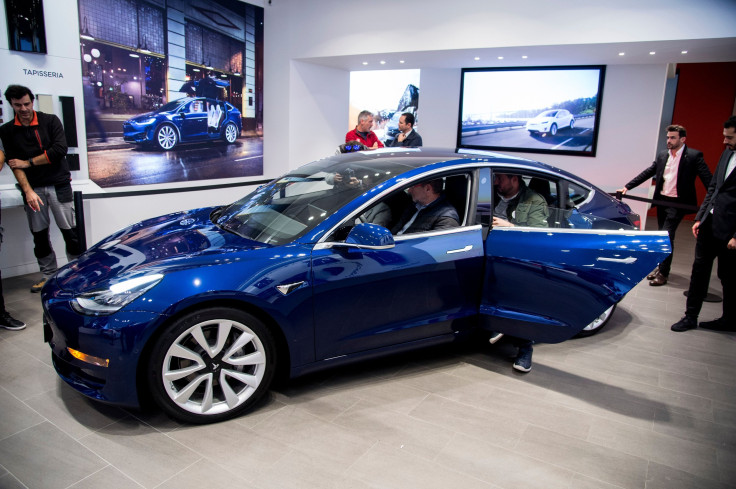Can Tesla Be Profitable Again In Q4?

Tesla (NASDAQ:TSLA) took investors by surprise last month when the electric-car company swung from a loss to a meaningful profit. On a non-GAAP basis, Tesla earned $2.90 per share, crushing a consensus analyst estimate for non-GAAP EPS of just $0.17. GAAP earnings and free cash flow for the period were impressive, too. The company's sudden profitability comes as Model 3 deliveries are surging.
This article originally appeared in The Motley Fool.
But given Tesla's long track record of losses and the capital-intensive nature of the automotive business, some investors may believe the company's days of profitability are numbered. Can Tesla report another quarter of profits and positive free cash flow?
Achieving Profitability
Tesla's third quarter benefited from a period of extraordinary growth, which ultimately led to better-than-expected profitability as the automaker achieved improved economies of scale.
The company's revenue surged 129% year over year thanks primarily to sharp growth in Model 3 deliveries, which soared more than 200% sequentially to over 56,000 units. That figure dwarfed combined Model S and X deliveries during the period: about 28,000 units.
Tesla's GAAP and non-GAAP net income for the quarter came in at $312 million and $512 million, respectively. Even more impressive, Tesla's free cash flow was $881 million, aided by $1.4 billion in operating cash flow.
It was an outstanding quarter, to say the least.
Sustaining Profitability
An overview of Tesla's third-quarter shareholder letter suggests the company is positioned to report another quarter of profitability.
For instance, Tesla expects its Model 3 production and deliveries in Q4 to be even higher than they were in Q3. Combining this forecast with management's expectation for Model 3 gross margin to remain stable during the quarter, higher unit sales should ultimately lead to a greater gross profit contribution from the Model 3.
On the other hand, there are some factors that management expects to weigh on profitability in Q4, but they aren't expected to have a big impact. For instance, Tesla forecasts Model S and X gross margin to be slightly lower, and operating expenses to be slightly higher in Q4 versus Q3.
As for Tesla's free cash flow, management's forecast is for more than a $200 million sequential increase in capital expenditures. This means free cash flow will likely still be positive, but lower than it was in Q3.
It's worth noting that management explicitly guided for another quarter of profitability in Q4. "We reaffirm our prior guidance that we expect to again achieve positive GAAP net income in Q4," Tesla's third-quarter shareholder letter said. "Similarly, in Q4, we continue to expect to generate positive cash from operating cash flows net of capital expenditures, as well as the normal inflow of cash received from nonrecourse financing activities on leased vehicles and solar products."
While management has been overly optimistic with some forecasts in the past, it doesn't look like this will be the case this time. Indeed, even analysts are on board. On average, they expect Tesla to report non-GAAP EPS of $2.01, up from a loss per share of $3.04 in the fourth quarter of 2017.
Daniel Sparks owns shares of Tesla. The Motley Fool owns shares of and recommends Tesla. The Motley Fool has a disclosure policy.





















